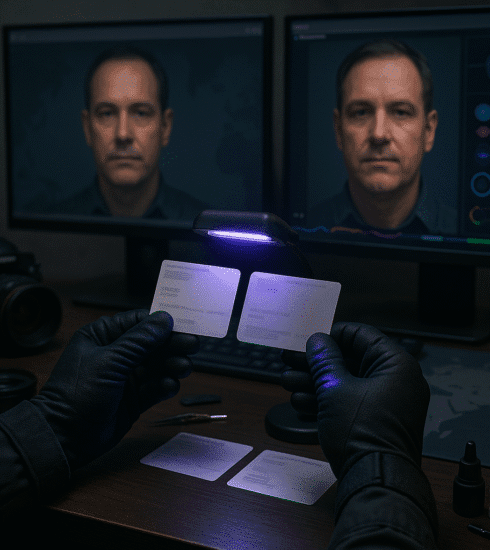Phishing Examples And How To Spot Them Fast
Phishing remains one of the most pervasive and effective threats to personal and organizational security. These attacks use deception to trick individuals into voluntarily surrendering sensitive information or installing malware. The sophistication of these campaigns has evolved far beyond the poorly written emails of the past. Modern phishing attempts are highly targeted, well researched, and often appear incredibly legitimate. Recognizing the subtle signs of a phishing attempt is a critical survival skill in the digital age. This analysis will break down common tactics and provide a framework for rapid verification. Your first line of defense is a healthy sense of skepticism and a pause for verification before any action.
Phishing preys on urgency and trust. The rule is simple. Verify first, never click. A legitimate organization will never demand immediate action through an unverified channel.
Deconstructing the Urgency Ploy
Urgency is the most powerful weapon in a phisher’s arsenal. Attackers create artificial time pressure to short circuit your rational thinking and force a quick, unverified action. Common themes include account suspension, unauthorized login attempts, or pending legal action. The message will insist you must click a link or call a number immediately to resolve the issue. This manufactured crisis is designed to override your natural caution.
A legitimate company will rarely, if ever, contact you out of the blue with an urgent demand for personal information. Your bank does not need you to confirm your account number via email. The tax authority will not threaten immediate arrest via text message. When you feel a sudden surge of anxiety after reading a message, recognize it as a potential trigger for manipulation. Pause and consciously shift from an emotional reaction to a analytical process. This moment of pause is your greatest defense.
Scrutinizing the Source Address
Every email comes from a domain name, and this is often where phishing attempts reveal themselves. The sender’s address may look almost correct but contain slight misspellings or use a different domain entirely. An email pretending to be from Microsoft will not come from a public email service like gmail.com or outlook.com. Hover your cursor over the sender’s name to reveal the true email address behind the display name. This simple act can instantly reveal a forgery.
Be particularly wary of domain names that use hyphens or substitute similar looking characters. Attackers often register domains like microsoft-support.com or use a lowercase ‘L’ in place of a number one. These visual tricks are easy to miss at a glance. Do not just glance at the address. Read it carefully and literally. If anything seems off, even slightly, treat the message as hostile until proven otherwise. The source address is a fundamental piece of evidence in your verification process.
Never trust the display name. Always check the actual sending address by hovering your cursor over it. A mismatch is a definitive sign of a phishing attempt.
Analyzing Link Destination Mismatches
Phishing emails and texts almost always contain a hyperlink that leads to a fraudulent website designed to harvest your credentials. The anchor text of the link, the clickable words you see, will often appear legitimate. The actual destination URL, however, will be completely different. Hover your cursor over any link without clicking to see the true web address in the bottom corner of your browser or email client. This is a critical verification step.
The true URL may be a long, convoluted string containing the name of a legitimate company in an attempt to appear authentic. Look closely at the domain name itself, which is the part immediately before the first single slash. Is it exactly the company’s official domain, or is it a subdomain of a suspicious site? A link showing “apple.com” could actually point to “apple.com.security-login.othersite.com”, where “othersite.com” is the real domain. This trick exploits how people read from left to right without noticing the full structure.
Identifying Generic Greetings and Poor Grammar
While many phishing campaigns have improved their language, generic greetings remain a common red flag. A message from a company that has your name will use it. Be suspicious of emails that start with “Dear Valued Customer,” “Dear Account Holder,” or simply “Hello.” This impersonality suggests a bulk send to a list of harvested addresses rather than a targeted communication from a business you have a relationship with.
Grammar and spelling mistakes are another indicator, though less reliable than in the past. Major corporations have professional communications teams that proofread customer messages. Obvious errors in a message purporting to be from a large bank or tech company should raise immediate concerns. Pay attention to awkward phrasing, unusual word choices, or inconsistent formatting. These are often signs of a translation or a rushed effort by a threat actor.
Recognizing Fraudulent Attachment Tactics
Some phishing attempts bypass links entirely and instead rely on malicious attachments. These files, often disguised as invoices, shipping notices, or documents, contain malware that installs itself when opened. The email will typically urge you to open the attachment to review an important matter or confirm a delivery. The file extension is a key thing to check. Be extremely cautious with executable files like .exe, .scr, or .js, even if they are disguised with a PDF icon.
Even seemingly safe file types like PDFs or Word documents can contain embedded macros or links that initiate an attack. The best practice is to never open an attachment from an unsolicited email. If you are expecting a document from a colleague, verify through a separate channel like a phone call or a known good email address that they indeed sent it. Your anti virus software is a last line of defense, but it should not be your first. Assume all unsolicited attachments are guilty until proven innocent.
Verifying Through Independent Channels
The single most effective way to neutralize a phishing attempt is to verify the message through a known, independent channel. If an email claims to be from your bank regarding fraud on your account, do not use any contact information provided in the suspicious email. Instead, open a new browser window and type your bank’s official website address directly, or call the customer service number on the back of your card. This completely bypasses the attacker’s fabricated narrative.
This principle of independent verification applies to every scenario. A text message from your boss asking for a gift card? Call them directly on their known number to confirm. An email from IT asking for your password? Walk to their office and ask in person. Phishing relies on controlling the communication channel. By breaking out of that channel and initiating contact yourself, you instantly discover the truth. This habit of verification is the cornerstone of personal operational security.
Phishing is a constant test of your awareness and discipline. The attackers are skilled at crafting believable narratives that exploit human psychology. Your defense is not technical prowess but a methodical process of verification. Look for urgency, scrutinize addresses, hover over links, and never trust unsolicited requests for information or action. When in doubt, always break contact and verify through a separate, trusted method. This cautious approach will protect you from the vast majority of digital deception attempts.





